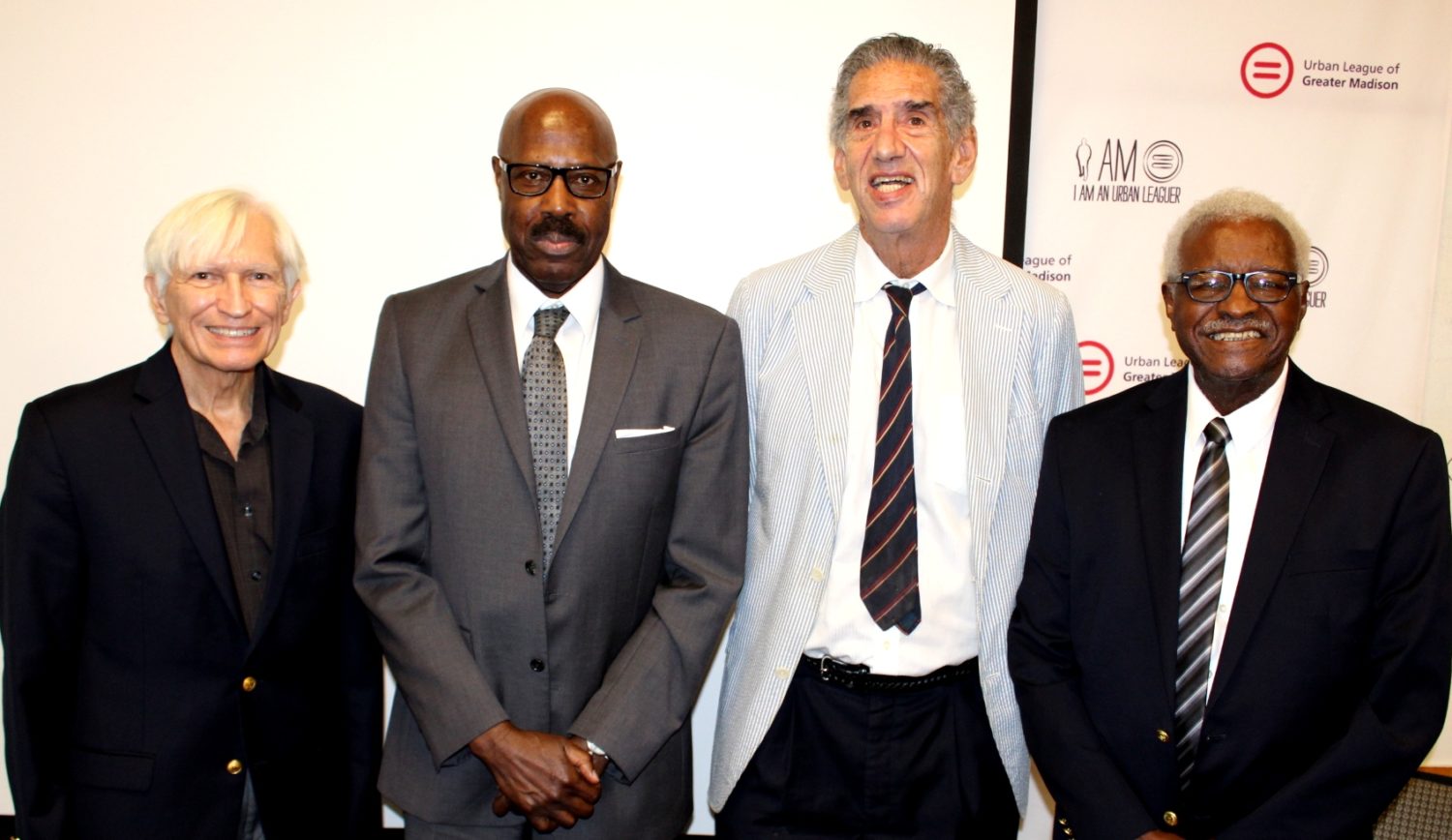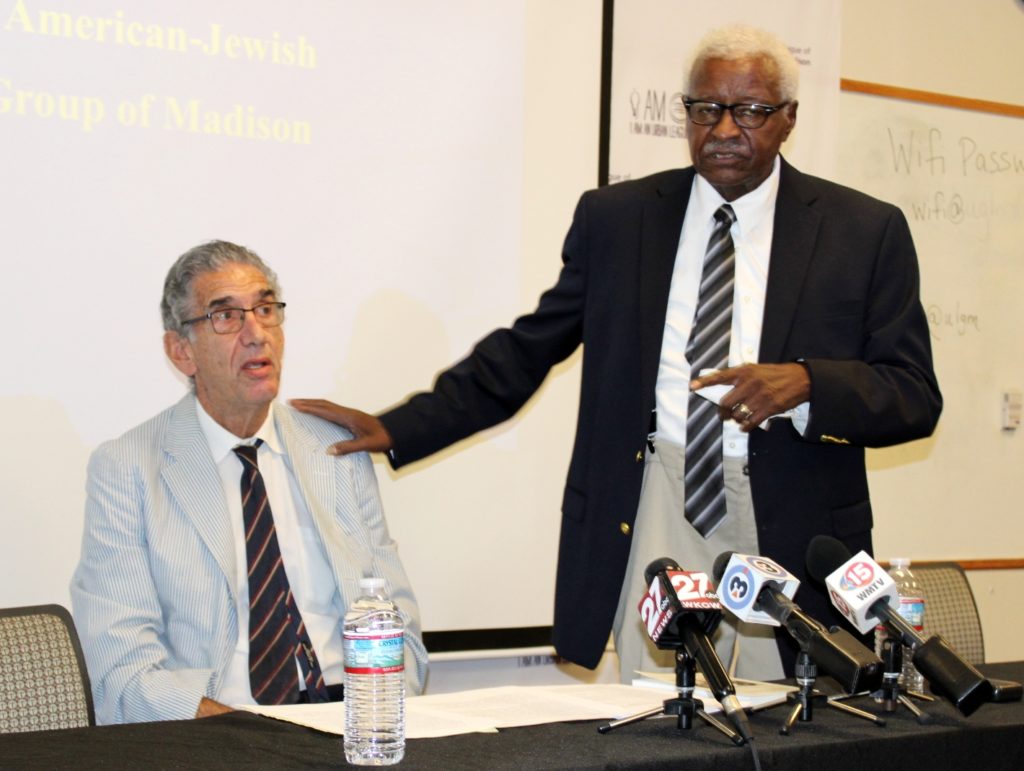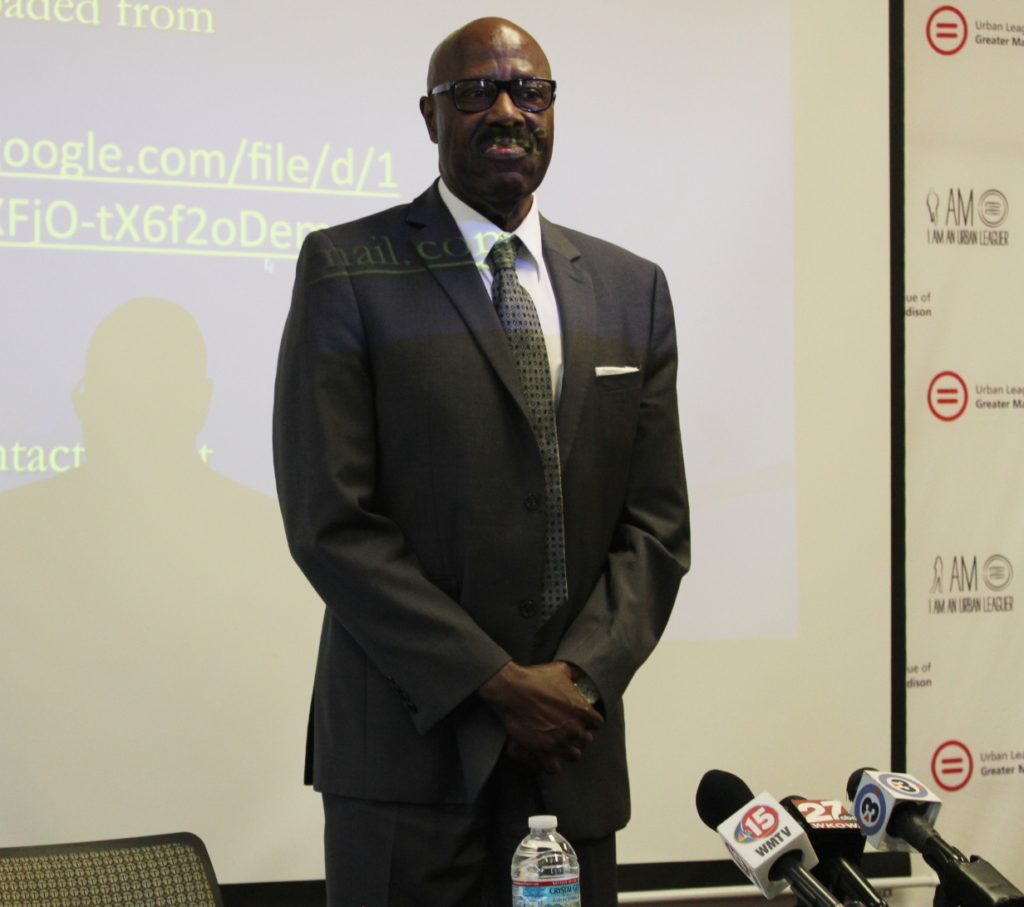
Madison and Dane County are often highly regarded as top places to live in the United States in a variety of metrics and benchmarks. However, a survey of employers done by the African American-Jewish Friendship Group in the greater Madison area shows that this is not the reality for everyone in the area: African Americans are consistently not getting key advancements or promotions in employment and are underrepresented in multiple areas including businesses, government and education.
The African American-Jewish Friendship Group held a press conference at the Urban League of Greater Madison Sept. 21 where they unveiled data from the results of a year-long study the group had completed on the employment of African Americans in the greater Madison area. What they found is that Madison has much work to do in workplace diversity and equality and that immediate actions are needed to address these inequities.
“Those of us who have been here for a long time, we have known about these disparities in this county, this community, in his state,” said Bill Greer, a member of the AAJF Group and the retired president and CEO of Journey Mental Health Center, “and so we knew that the numbers weren’t going to be positive, but I think we were surprised by how bad it is, particularly in the for-profit sector,”
Another member, Dr. Richard Harris, is a long-time beloved Madison south side resident and the author of Growing Up Black in South Madison, where he describes his experiences growing up and living in Madison and dealing with racism from 1937 to the present.
“From my observation of being Black and also talking to many Black people in the city, what really upsets a number of Black people in the community is when there will be something in the news about Madison being ranked fourth in the nation for overall livability … And when I talk to people, they say, ‘Well, who do they interview for it to be ranked fourth?’ [They don’t like] the fact the Black people are being summarily overlooked in this city in a purposeful fashion. And so that’s why we started this and the numbers that we’ve presented really show it.”

(Photo by David Dahmer)
Researchers of the African American-Jewish Friendship Group of Madison collected data from 178 employers and more than 75,000 employees across Dane County. The group noted some positives in their report: in not-for-profits boards and staffs, they saw greater African American advancement, as is the case on several of the school boards. They also noted the presence of African Americans in top roles in Madison such as Madison Police Chief Shon Barnes, Dane County Sheriff Kalvin Barrett and MMSD Superintendent Dr. Carlton Jenkins.
The full report can be found here. Some of the group’s conclusions include:
- As far as the schools across Dane County, the number of African American teachers is glaring and insufficient, even in the Madison Metropolitan School District. Five school districts have no African American teachers, two have one each and one district has two. Madison has the highest percentage of Black teachers, almost 3% but also has the highest percentage of African American students, at 18.5%.
- The biggest takeaway from the report is that where African Americans are employed in business, they are predominantly in non-managerial positions. This pattern seems to be generally true across the other sectors we surveyed.
- Even at the University of Wisconsin-Madison, a world-class university, the number of African American professors and associate professors is smaller than would be expected. the percentage of African American professors (2%) and associate professors (3%) is considerably smaller than that of Wisconsin as a whole (12%).

According to the report, roughly half of the employers in the survey have hiring plans to increase diversity, yet analysis shows that, in many cases, just the presence of a plan has little relationship with the employment of African Americans as a whole or in administrative or supervisory positions.
“Our interest in this topic goes beyond the scientific. As African American men and Jewish men and women, we have a stake in these outcomes. As we pointed out, Dane County has a pretty dismal record in terms of how it employs, educates and houses its people of color. So we tried to delve into those issues in this process and in this particular survey,” Greer said. “It was very enlightening for us to make calls to our businesses in this area and to sometimes receive a negative response in terms of the information that we were trying to elicit from them. But I can only imagine what it must be like to go into those places as a potential employee and try to get a job.
“So this is an issue that we have to address,” he continued. “We were not just looking for data, cold hard facts, we were looking for signs of hope. And some of them appeared,” he adds. “Organizations that have succeeded in this area [of diversity] tend to incorporate valuing diversity, equity and inclusion into their culture. These are not just words on paper for these organizations, not just something that they talk about during Black History Month, or Hispanic [Heritage] month, or LGBTQ month, they are part of the bones and the blood of their organization … meaning that these principles permeate from the top to the bottom. They are part of the organization’s beliefs, customs, language, and its rituals. So when we walk into places like this, and I will tell you that the Urban League is one of those places, you see that sense that diversity is valued.”
At the press conference, Greer took a moment to acknowledge Denise Gotautis, who also did work on the report along with the four men, who he said, “played a pivotal role in helping us collect the data.”
“The purpose of this really is to shine the light on the situation that we have in employment in Madison,” said Gerald Sternberg, a member of the African American-Jewish Friendship Group. “We felt it was very important and compelling – and it hasn’t happened too often – to shine a very specific light on the whole community’s employment, particularly African Americans, to see if we’ve made any strides. And you see the bright spots that we’ve acknowledged, but then there’s a lot that’s not. And the fact that there’s not, the question is: What’s going to be done about it? And hopefully, business and government and school districts will look at these statistics and say, ‘We can do better. We can develop diversity plans, we can work on this, we can hire more African Americans who are qualified … and something positive will come out of this.”



